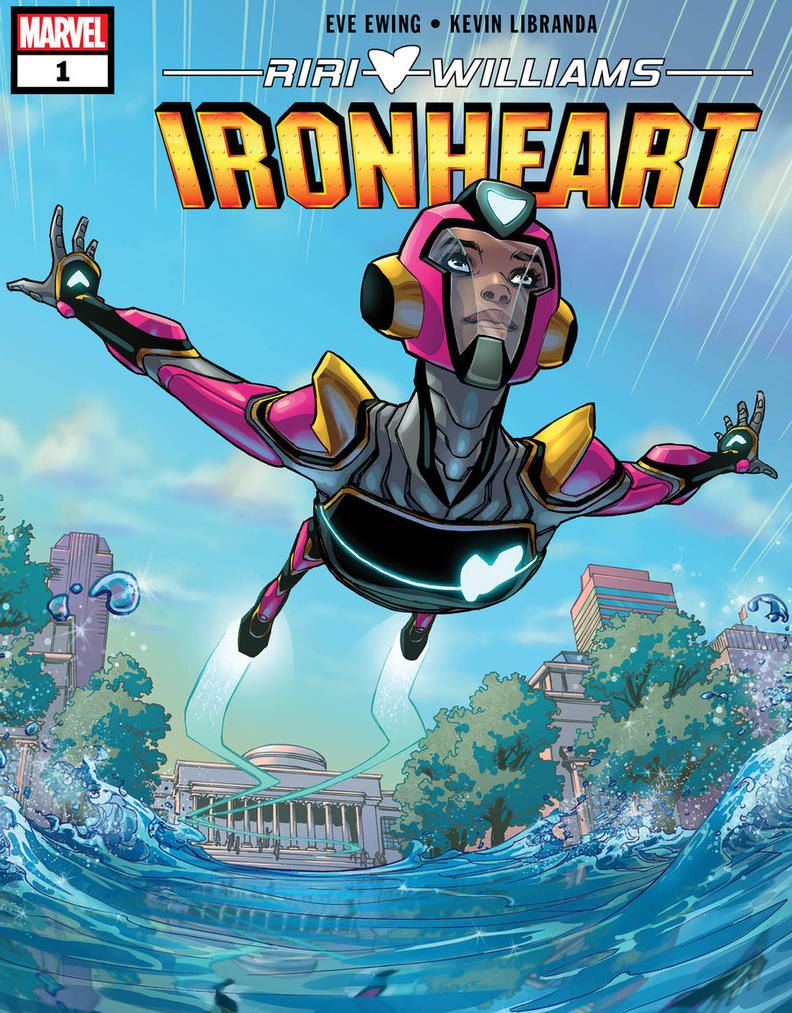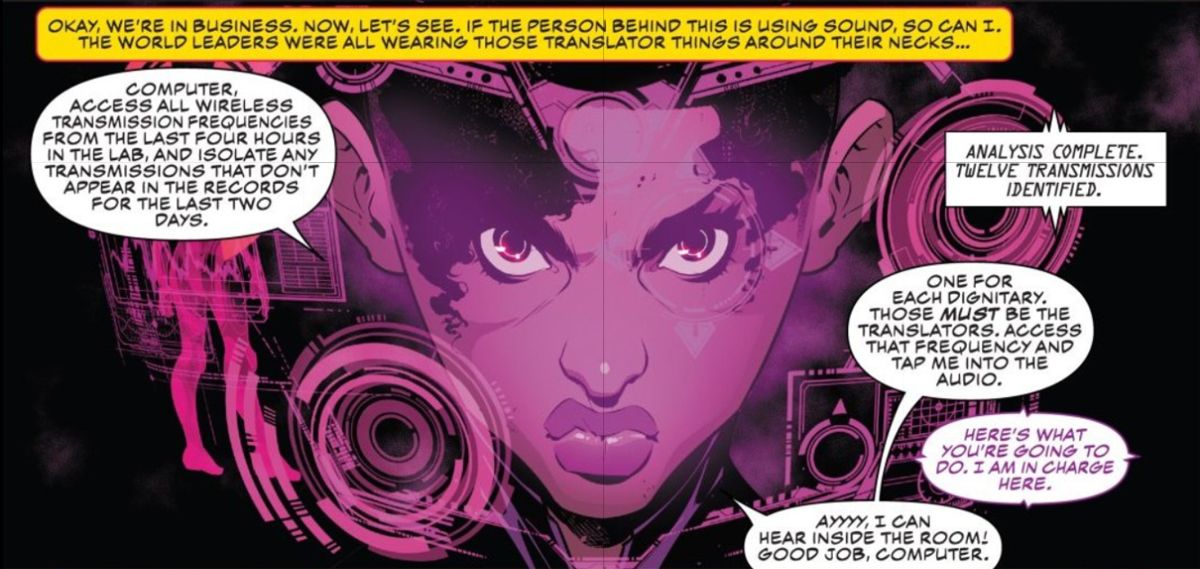REVIEW: Riri Williams Soars in Marvel's Ironheart #1
- WRITER
- Eve L. Ewing
- Artist
- Kevin Libranda, Luciano Vecchio
- Letterer
- VC's Clayton Cowles
- Cover Artist
- Amy Reeder
- Publisher
- Marvel Comics
- Price
- 4.99
- Release Date
- 2018-11-28
- Colorist
- Matt Milla
There’s a pretty standard formula when it comes to the debut issue of a character's solo comics series. No matter how many other comics they’ve appeared in before, when it comes to new number ones, there are certain narrative beats you need to hit: Establish the superhero early on; showcase her in battle against a competent, but relatively simple, villain; depict the character's central conflict, and build upon it to convey why this new superhero is worth the readers' time; and close with a cliffhanger that leaves them wanting more. Not only does Marvel's Ironheart #1 tick all those boxes, and more, but it also takes the rare (and potentially risky) decision to focus more on the "hero," and less on the "super."
Despite the inclusion of a Spider-Man villain (more on that later), from the start writer Eve L. Ewing builds a quintessential Riri Williams adventure. While any other hero could have thrown herself into this situation, the way that Riri confronts the problems that face her is what makes this so definitively an Ironheart book. This is a young technological genius, and so her solutions are technological in nature. Spider-Man, for example, would have undoubtedly used his agility along with his brains, and Ms. Marvel her warmth and compassion, but Riri utilizes her smarts and her technology to solve the problem. That's what sets apart both her as a character and the book itself from the rest: It's not because she's Ironheart that the day is saved; it's because she's Riri Williams.
RELATED: A Major MCU Supervillain Group Just Made the Jump to Comics
There’s also a scene later in the issue in which Riri catches up with an old friend, and the entire scene -- visually and narratively -- is engineered to provide deeper insight into Riri as a character. For those wondering why we need another Iron Man character on the stands, Ewing (and by extension, this entire issue) proves why: because you’re not reading another Iron Man story; you’re not really reading an Ironheart story. You're reading a Riri Williams story. It’s such a subtle difference, but the emphasis is on the girl in the suit, rather than on the suit she’s wearing. The question as to why she even wears a suit is asked here too, and it’s answered in a satisfying way.
This isn’t her origin story, so time needs to be spent on retelling that for new audiences. It’s never spoon-fed to us. though, nor is it dumped on us expositionally. Instead, it’s her origins that drive her current motivations, so when she faces against things in the present day, she calls on the tragedy of her past to reinforce her actions in the present. It’s a classic superhero trick, everyone from Batman to Rocket Raccoon have tragedy drive their motives, but Ironheart #1 does it in a way that’s not fantastical or superheroic, but a devastating aspect of so many lives in modern-day America. Riri learns early on that with great power, comes great responsibility, and seeing as she has the power within her to make a difference, that’s what she does.
The issue opens with Riri showing off her new suit to us (the last one was destroyed by Thanos) before confronting the Dean of her college for showing a delegation of world leaders around her lab uninvited, a delegation which promptly needs rescuing from the villain Clash who takes them all hostage. If you don’t remember Clash, he’s the retconned schoolmate of Peter Parker who was revealed in a miniseries to have been the first superpowered villain that Spider-Man faced. It’s an odd choice of character, but in the context of the story, it makes perfect sense He’s a regular guy with super smarts and powers grounded in science, making him a perfect foil for Riri.
RELATED: Marvel Will Upgrade Ironheart's Armor in Champions
Ewing propels the story along with a breezy, natural script that builds up the complexities in Riri’s character. Much like Peter Parker before her, Riri is somewhat awkward and socially inept in her lab, but put her in the armor and she comes alive with confidence and humor. Again, Ironheart #1 leans into classic superhero tropes but never uses them as a crutch. Yes, you’ve seen these beats before, but the rhythm is entirely new and refreshing and, most importantly, unique to Ironheart.
Kevin Libranda and Luciano Vecchio take the balance between Riri and Ironheart in their stride, and their art in this issue reflects that. The flow and the pacing of the action scenes are dynamic and fluid without ever being complicated, and the facial expressions and body language of the cast are expressive and emotive, making them a vital companion to a script that aims to deliver a lot of deep characterization. The scene later in the issue, where Riri chats to an old friend, starts with a pan across her desk as she searches for her phone. The objects on her cluttered desk say as much about her character as the following conversation, showcasing just how perfectly paired the writing and the art really are. Throw in the fact that Matt Milla’s colors bring every page to life, and Clayton Cowles lettering handles complex scientific jargon and complex emotional beats all with the same level of care, and you have a genuinely good-looking book.
This may not be Ironheart’s origin, but it is her first (proper) debut as a solo character. As such, Ewing and the team call upon the lessons of past superhero debuts to craft a tale that perfectly walks the line between classically Marvel and refreshingly new. The art is vibrant and engaging, and the script is a genuine breath of fresh air that injects a new life into Riri Williams that will hopefully see this character and her adventures continue on for many years to come. Brian Bendis did a wonderful job creating this character, but Eve L. Ewing makes Ironheart her own.


